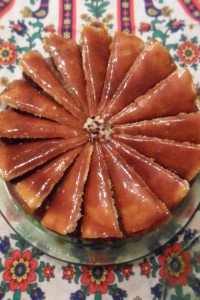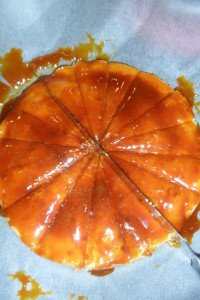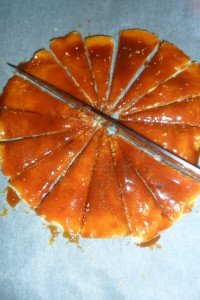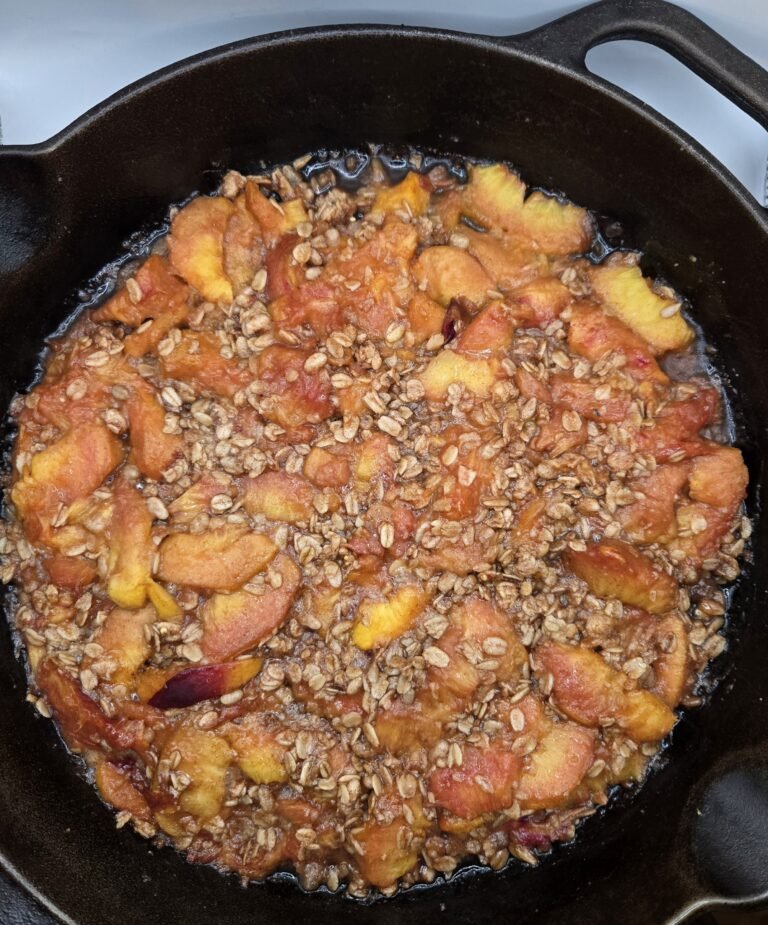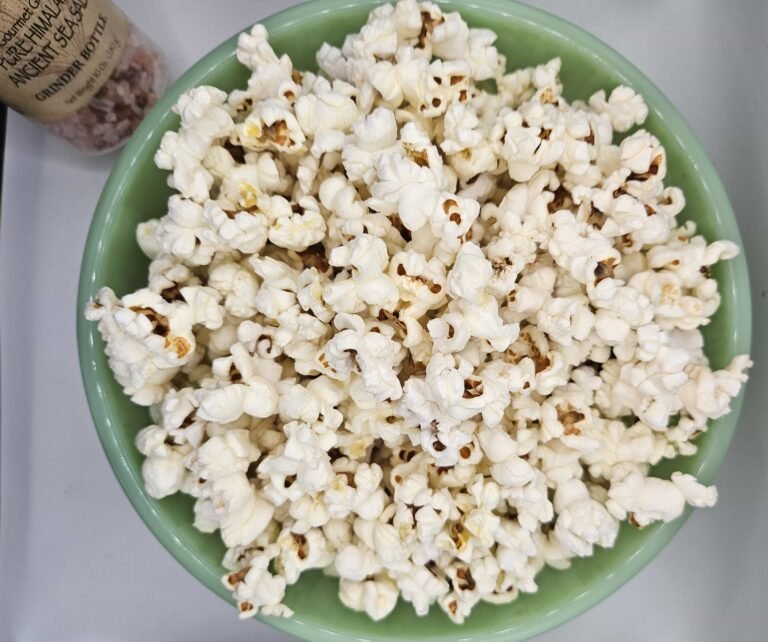There are still plenty of issues to cover including cooking topics like fermentation and bread starters, and real food issues such as artificial sweeteners, supplements, soy, nightshades, bees, factory farm manure lagoons, and many others; I will get to them in due time. The first year I wanted to write every day because the effort to eliminate processed food can be daunting and I wanted to be there every day for anyone making the change. If you’re new to the concept of real food, and don’t know where to start, just go to Day 1.
While we’re not a family dealing with health issues like high cholesterol or diabetes, I was seeing effects of the modern American diet such as depression and weight gain. Now we have a traditional and natural way of eating. Before the shift, I grew out of my clothes by a few sizes. Now all of the larger clothes went in a donation bag. At first I kept one pair of loose pants in case of a Christmas cookie relapse, but learned that an occasional step back doesn’t have much of an effect on weight.
Even though we’re buying more expensive food to get organic produce and meat from local farmers, our overall food expenses are less. The two main reasons we’re saving money on food are because we eat out less and I rarely throw away food. The biggest factor in both savings are the weekly food calendar.
I’ll be back occasionally with more research and recipes. As always, let me know if there’s a topic you’d like me to cover. I love to share ways people can protect their health and the planet, and we can learn together.
What am I going to do with all my free time now that I’ll allow a day to pass without posting to my blog? I’m looking forward to a few things such as:
- Using the Wii to exercise. We broke down on our ‘no video games’ rule and gave the kids a Wii last Christmas. I bought a used Fit Meter on Ebay for $1.99 and have not yet used it.
- Go to one of the kids’ track meets or soccer games; I haven’t been to one yet this year.
- Water the plants and enjoy the yard and gardens on a weekday.
- Watch a TV show or movie without multitasking on my laptop.
- Go out to dinner and have a drink. I’ve been avoiding having a drink at dinner because I’m afraid it will make me tired and I’ll lose the motivation to get my post done by midnight.
- Read a magazine or book that doesn’t have recipes in it.
- Go out to eat somewhere we’ve already been and not take any pictures of my food.
- Eat a bunch of processed food – haha – just kidding! I tried eating a cookie the other day out of a package someone brought to work and I couldn’t finish it. You do eventually lose your taste for fake food.
- Sign the kids up for summer camps and plan a vacation.
- Finish my book of essays and short stories.
- Start working on my “sister site” Depression Free Forever — COMING SOON!
To celebrate the end of my continuous year of blogging, I made a Hungarian cake called Dobos Torte, named after the chef who created it and known, as it says in one of my old cookbooks, to be “a special celebration treat for Hungarians.”[1] The cute cookbook was my Grandma’s, and at one time they were handed out as a freebie at the local savings and loan.
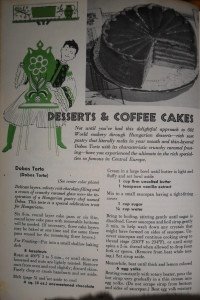
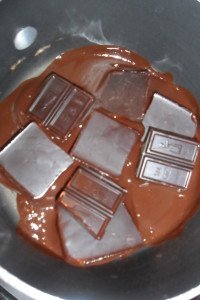
There are many ways to screw up this recipe and I have done them all multiple times. I will give you as many tips as I can and have simplified the recipe somewhat, but this ranks as the most difficult thing I make. It is absolutely worth the effort though, once in a great while, otherwise you know I wouldn’t bother. Have extra ingredients on hand – particularly a couple of dozen eggs, a full bag of powdered sugar and organic granulated sugar. Even though the recipe calls for small amounts, you don’t want to cry because you screwed it up AND you have to drive back to the store.
Dobos Torte
Torte
6 eggs, divided
1/2 C sugar, divided
1 C flour
Frosting
1 C butter
1 t vanilla
1 C sugar
1/4 C water
4 oz unsweetened chocolate
6 egg yolks
3 T chopped hazelnuts
Caramel Topping
3/4 C powdered sugar (10X, confectioners)
Preheat oven to 350. Grease 6 8” baking pans (you can reuse 2-3 pans). If you have some kind of baking pan liners (like silicone) that works best.
Beat the egg whites until frothy, then gradually add 1/4 cup sugar while beating. Beat to soft peaks that do not run when you tilt the bowl – it may take more than 5 minutes. In another bowl, beat the yolks well with 1/4 cup sugar. Gently put the egg yolks over the egg whites. Sift the flour over the egg mixture in quarter cup amounts, and fold in. Do not overmix or the batter will lose its fluffiness and you won’t have enough for six layers.
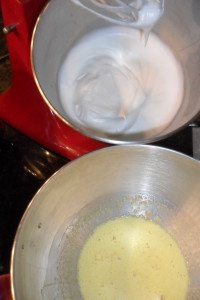

Spread 1/4” of batter into the prepared pans. Bake for 15 minutes, or until small, brown spots begin to appear on cake. Remove the cake from the oven, and remove layer from pan with a spatula. Dust the cake lightly with flour, and place on a parchment covered rack to cool. Grease pan again if re-using pans, and repeat this process to make 6 layers.
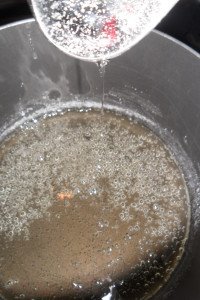
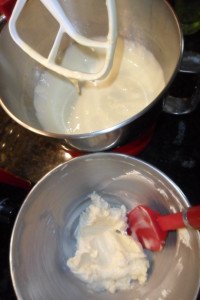
Meanwhile, cream butter and vanilla. Melt chocolate in a small pot and set aside. In another small pot with a tight lid, mix 1 cup of sugar and 1/4 cup water. Bring to a boil while stirring gently then cover and boil gently for 5 minutes. Uncover and continue cooking to 230-234 degrees until syrup spins a 2-inch thread when allowed to drop from a spoon. Remove from heat each time you test. Set syrup aside.
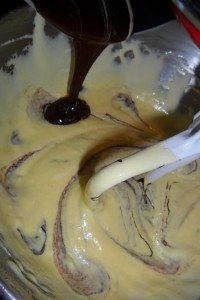
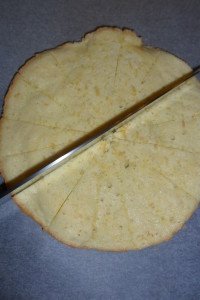
Beat 6 egg yolks well. Drizzle in hot sugar syrup very gradually in a thin stream. Do not scrape syrup from the bottom or sides of the pot. Beat egg yolk mixture until very thick and almost the same consistency as the creamed butter (this may take 5-10 minutes). Beat the egg yolk mixture very gradually into the butter mixture a couple of tablespoons at a time only until just combined. Blend in the chocolate and hazelnuts. Put the frosting in the refrigerator.
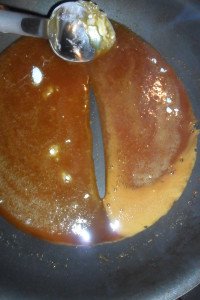
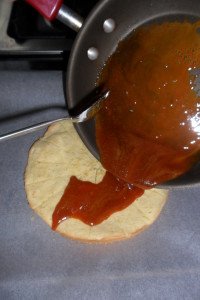
Put one layer of the cake on parchment paper and gently half-cut grooves in the top to make 16 sections without cutting through the layer. Put powdered sugar in a small, warm, non-stick pan over medium heat. Allow sugar to cook until melted and brown while stirring gently with a wooden spoon. When melted to an amber color, carefully pour the caramel over the top of the layer, and quickly spread evenly. Quickly, using the back of a knife blade, indent the top of the caramel into the cuts. Wait a minute to cool slightly, then cut through the layer with the knife blade.
Cover each of the remaining cake layers with the frosting and stack them to make a good seal. Frost the sides. Top with the caramel sections – you can put a little dot of frosting under each one if you want them slanted.
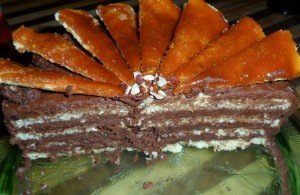
[1] “The Hungarian Cookbook,” Culinary Arts Institute, Chicago IL, Book Production Industries Inc., 1955.

